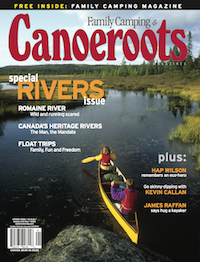Buying a new tent is somewhat like buying your first house. It is a major investment that will shelter your family for a long time. To avoid costly mistakes it is important to consider your needs, do your research and check to see what’s on the local market. At the base of the pyramid-of-needs is shelter. First and foremost, your tent must protect you from elements like wind, rain, sun, snow, neighbours or bugs. Other features of modern family tents are more about lifestyle and convenience, frills you might say, but frills that will affect the happiness of everyone living inside.
Tent Size
Like a one-bedroom apartment, a low-profile two-person tent may have been adequate before the children arrived—but families need more space. Ensure that you have enough growing room and don’t forget about storage space. To live comfortably consider a tent designed for at least two more than the actual number of people sleeping inside—a family of four should look at six-person tents.
Floor plan
Just like a home, tents with the same amount of living area will feel larger or smaller depending on how the space is laid out. Young children may feel more secure sleeping near mom and dad while older ones may appreciate their own room. In- stead of having everyone under one roof, consider buying two smaller tents. This of- fers greater privacy, more set-up options at small campsites and a smaller tent for romantic weekends without the kids.

Shape and Season
If your family camping involves hiking to mountain summits, winter camping or camping in Kansas you’ll need a tent that can cope with a wide variety of temperatures and wind conditions. Low-profile dome tents and expedition-grade four-season tents can weather strong winds and snow loads and are warmer than traditional designs. For everyday summer camping look for good ventilation, higher ceilings and fine mesh coverings to keep insects on the outside looking in.
Materials
Traditional canvas tents are very robust and breathable, but also heavy and sus- ceptible to leaking in very wet weather. Most modern tents use man-made nylon fabrics that are very light and waterproof. These synthetic materials can be delicate and prone to condensation—look for plenty of vents if you’re headed for a hot climate. Inquire about what maintenance is required for the materials and if spraying, sealing seams or the use of a ground sheet are necessary.
Assembly
Some family tents are gigantic, others are complicated to set up and take down. Before you buy a castle think about how many skilled minions will be needed to erect your fortress. If you are base-camping and not breaking camp each morning you can get away with a more elaborate structure. A practice set-up at the store with experienced staff is good training for rainy arrivals and allows you to check the tent bag for all the parts.
Transport
Will you be backpacking with your tent or carrying it in your canoe? Will it fit in the trunk of your car or will you need a roof rack or trailer? How you will transport the tent to your campsite will affect the weight and size you are willing to carry. There are tents that try to be both big and light, but often you’re better off with two tents—one for the backpacking trips and one for car camping.
Storage
You will need a dry place to store your camping equipment. This may be in the van, under your canoe or in your tent. Where you store your stuff may determine the size and design of the tent you will choose. Storage options range from cute vestibules just big enough to hide a pair of boots to tents with separate rooms you can park a car inside.
Bells and Whistles
Take into account all of the extras. Tents can be very elaborate shelters with room dividers, canopies, windows, skylights, pockets and complicated zipper systems. Knowing what you really need before shopping will save you paying for and carrying things you won’t use.
Open House
Shop around and look at as many tents as you can. Check out the tents of your friends and ask them what they like or don’t like about them. Don’t rely on photos on the Internet; go to stores and ask questions. Good camping stores with trained staff will help you set up a number of models. Pile the entire family inside and listen to their opinions. If there is going to be complaining you want to hear it now. Remember, buying a tent is like buying a house. You wouldn’t buy a house without walking though it. The same should be true for your home away from home.
Putting in the Offer
All of the above considerations influence the price of a tent. Make a list of what you really need, then what you really want and then spend all the money in your purse. Camping is relatively inexpensive but there is an initial outlay and your shelter is never a place to scrimp. Remember to include in your budget essential items like ground sheets, sleeping bags and sleeping pads—all of which make sleeping in whatever tent you buy that much better.
 This article first appeared in the Spring 2006 issue of Canoeroots Magazine. For more great content, subscribe to Canoeroots’ print and digital editions here.
This article first appeared in the Spring 2006 issue of Canoeroots Magazine. For more great content, subscribe to Canoeroots’ print and digital editions here.




